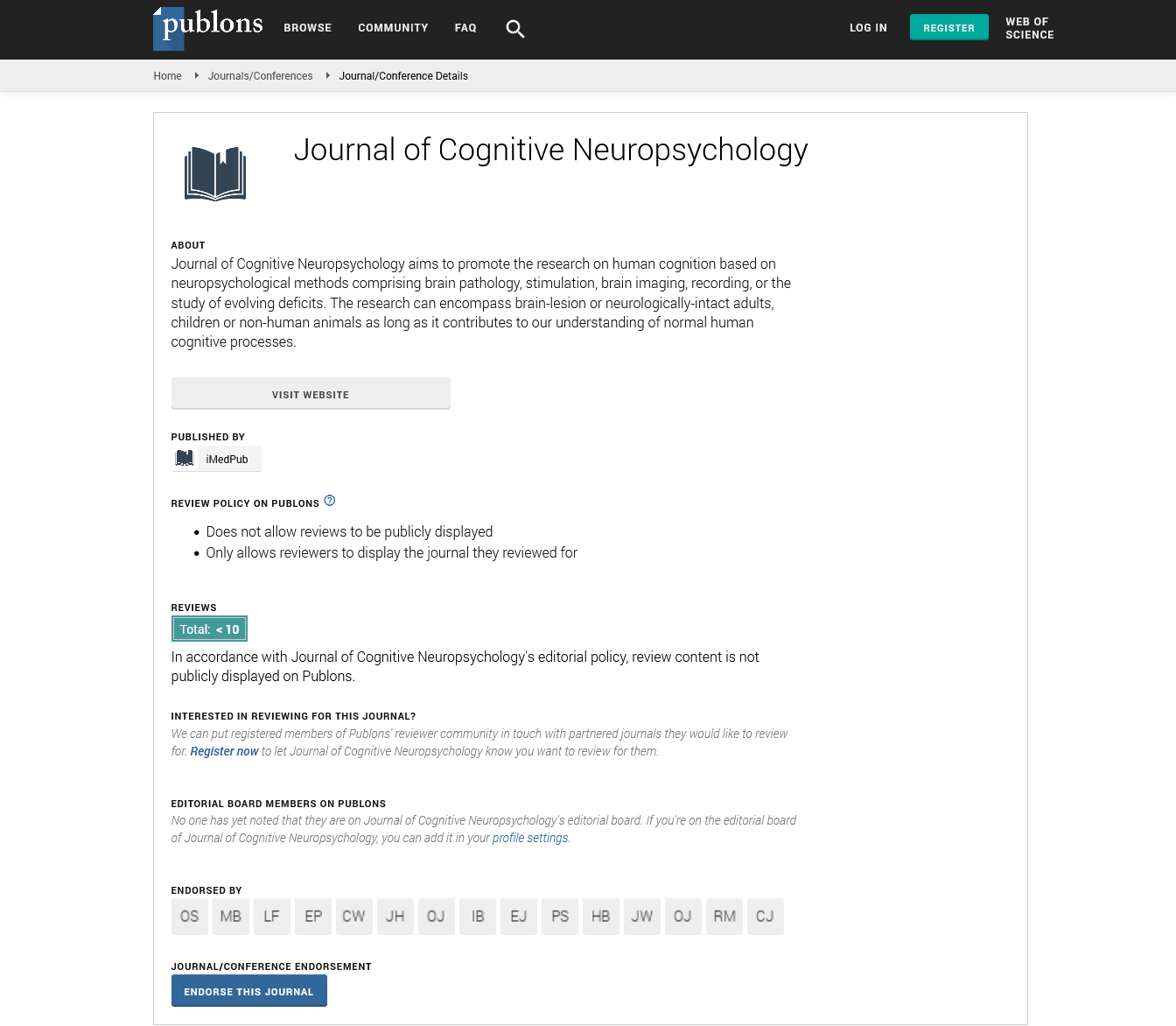Abstract
A Review of the Effectiveness of Aerobic Training in Increasing Endurance in Subacute Stroke Patients
Stroke is one of the most important causes of disability and rehabilitation services are widely prescribed for stroke patients [1]. An important aspect of rehabilitation is reeducation of movement, balance, strength, and gait. Moreover endurance is another important component of rehabilitation.
In the acute phase of stroke, endurance, as measured by peak oxygen consumption, can decrease to even the 60% of the capacity of healthy individuals matched in age and sex [2-4]. It has been supported that low peak oxygen consumption indicates that perhaps low levels existed before the stroke took place [2].
Stroke patients demonstrate low endurance and low aerobic exercise capacity, which can be attributed to stroke itself as a pathological manifestation having secondary effects to the function of the body. Furthermore, inactivity and immobilization resulting from the movement limitations that are commonly met at least in the acute phase may also result in low endurance and exercise capacity [5].
Low aerobic capacity can be attributed to a reduction in the oxidative capacity of the affected muscles and the decrease in active motor units [6]. Reduced exercise capacity is also supported to result from unilateral dysfunction of the paretic limb [7-10]. Adaptations that have been reported are reduction of femoral artery diameter [8,9], blood flow reduction [7,9,10], change in tissue composition [11-13], and vasomotor reactivity [9,10].
Spasticity may be a factor contributing to increased levels of energy required for movement, as supported in studies focusing on multiple sclerosis or cerebral palsy [14,15]. Another factor may be age related. Co-contraction is a result of reduced muscle co-ordination which we propose may lead to increased levels of required energy. With advancing age, co-contraction of the muscles in joints is introduced and increased [16]. There is thus evidence that following stroke, low aerobic capacity is demonstrated due to spasticity or possibly incoordination of muscle contraction around the joint.
The purpose of this review was to investigate the effectiveness of aerobic training to increase endurance in subacute stroke patients. The subacute phase was selected since it was aimed to evaluate inpatient or early outpatient stroke patients in rehabilitation centers, and this is the phase that patients are commonly treated in rehabilitation centers.Objectives: It is well established that the interaction between Ca2+ and cAMP signalling pathways is as a vital cellular process in mammalians [8-11]. This classical concept assumes that these signalling pathways virtually exist in all mammalian cells, modulated by adenylyl cyclases (ACs) and phosphodiesterases (PDEs) [8-11]. In addition, endoplasmic reticulum (ER) Ca2+ channels have particularly been a forefront for the interaction between Ca2+ and cAMP signalling pathways field, such as Ca2+ channels modulated by ryanodine receptors (RyR) [8-11]. We reinforced the idea that the interaction between Ca2+ and cAMP signalling pathways plays a fundamental participation in the modulation of neurotransmitter release from neurons and neuroendocrine cells [8-11]. Then, the interaction of Ca2+ and cAMP signalling pathways could be a new therapeutic goal for pharmaceuticals..
Results: In fact, it was showed that the prescription of L-type CCBs is able to reduce motor symptoms, and reduces the continued neuronal death in animal model of Parkinson´s disease, indicating that L-type CCBs are potentially workable neuroprotective pharmaceuticals [15]. Intriguingly, a 1-decade study involving thousands senile hypertensive patients demonstrated that prescription of L-type CCBs can reduce blood pressure, and incidence of dementia in hypertensive patients, indicating that these pharmaceuticals could be used to treat neurodegenerative diseases in clinics [16]. These results for the effects related to neuroprotection of CCBs have been reinvestigated in thousands elderly hypertensive patients with dysfunction of memory abilities [17]. These studies concluded that patients who have taken CCBs had their risk of cognitive dysfunction decreased, such as Alzheimer´s disease [17]. These findings reinforce the concept that Ltype CCBs can reduce cytosolic Ca2+ overload produced due to blocking of Ca2+ influx, and thus could be an alternative pharmacological goal to reduce, or prevent, death of neurons resulted from neurodegenerative diseases.
Based on these findings, we have anticipated that the pharmacological regulation of the Ca2+/cAMP signalling interaction by combined use of the L-type CCBs and [cAMP]c-enhancer compounds could be a novel therapeutic goal for increasing neurotransmission in neurological, and psychiatric disorders, resulted from neurotransmitter release deficit and neuronal death [8-11]. This pharmacological strategy opens a novel pathway for the drug development more efficient for the treatment of Alzheimer´s and other neurodegenerative diseases [18-24].
Conclusions: A review of the literature took place, regarding the effects of aerobic training in stroke patients in the subacute stage. Electronic databases searched online were Medline-Pubmed, Cumulative Index in Nursing and Allied Health Literature (CINAHL) and Excerpta Medica Database (EMBASE). The inclusion criteria were clinical studies that took place within the last 15 years. Clinical trials were included with an emphasis placed in Randomized Controlled Trials (RCT), so as to include research with the highest quality of evidence. The keywords “subacute stroke” and “endurance” or “aerobic” were selected, rendering 14 and 29 results respectively. Of the 7 studies initially selected only 3 RCTs (Tables 1 and 2) [1,6,17] and one RCT study protocol [18] met the inclusion criteria.
Author(s): Konstantine C Balakatounis1, Antonios G Angoules2*, Georgios A Angoules3 and Kalomoira A Panagiotopoulou
Abstract | PDF
Share This Article
Google Scholar citation report
Citations : 8
Journal of Cognitive Neuropsychology received 8 citations as per Google Scholar report
Journal of Cognitive Neuropsychology peer review process verified at publons
Abstracted/Indexed in
- Google Scholar
- Publons
- MIAR
Open Access Journals
- Aquaculture & Veterinary Science
- Chemistry & Chemical Sciences
- Clinical Sciences
- Engineering
- General Science
- Genetics & Molecular Biology
- Health Care & Nursing
- Immunology & Microbiology
- Materials Science
- Mathematics & Physics
- Medical Sciences
- Neurology & Psychiatry
- Oncology & Cancer Science
- Pharmaceutical Sciences
